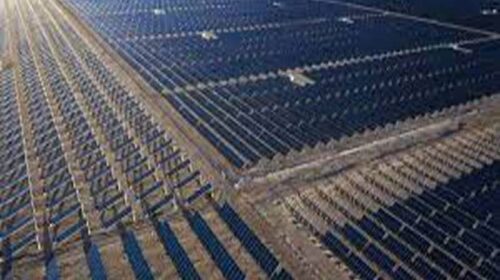Our government has recently announced that it intends to install 10,000 MW of photovoltaic (PV) systems in the country on a fast-track basis. According to media reports, these installations will include rooftop PV systems in residential, commercial, and government buildings, agricultural tube-wells, and on a couple of thousand 11 kV distribution feeders.
The motivation behind this initiative is the government’s desire to reduce the country’s present dependence on imported fuels whose prices have sky-rocketed in the aftermath of Russia’s invasion of Ukraine and threaten the economic stability and security of the country.
While the government’s above objective is laudable, it must move on this matter carefully and only after properly evaluating the merits and demerits of pursing such an ambitious program, particularly on a fast-track. There is no one-to-one linear relationship between power generation from conventional sources (oil, gas, coal, nuclear, and hydro) and that from uncertain and variable renewable ones (solar and wind). Any miscalculation based merely on hopes and expectations can easily turn this initiative into a misadventure. Extreme caution, therefore, is required.
There seems to be some arbitrariness in this plan already as we had been hearing of targets such as 6,000 to 7,000 MW which suddenly have been raised to 10,000 MW. For a number of reasons, it will be advisable for the government to tread cautiously on this initiative until it has properly evaluated the scope and feasibility of deploying PV systems in different parts of the power grid such as behind-the-meter with or without storage batteries, on distribution feeders or substations near the actual loads, or utility-scale plants. Each mode will involve significantly different technical issues and substantially different costs and benefits.
As a general principle, the government should avoid ad-hoc policy-making and spur-of-the-moment decisions. We are a poor nation and must exercise utmost care in committing even a single rupee on any scheme whose scope and financial implications are not fully evaluated and which may be difficult to unwind later. Inconsistency or discontinuity in public policies is as bad as, or even worse than, any flaw in the policy itself. There should be a clear hierarchy in the various policies issued by the government. Sectoral policies should emanate from national policies and should further elaborate on and complement them.
This new initiative is a classic example of the fragmented, disjointed, and parochial thinking of our leaders and policy-makers. The dust had hardly settled on the Alternative and Renewable Technologies (ARET) Policy 2019 when this solarization initiative has emerged. If the government was not happy with that policy, it should have improved its previous policy instead of issuing a new policy especially for the fast-track deployment of PV systems in the country.
There is no denying that the prices of PV systems have plummeted in the past few years but these have barely reached grid parity with other conventional technologies. There are still many concerns and questions about their true costs in serving the end-user demand. Perhaps the thinking behind this initiative is that the owning and operating costs of PV systems is reasonably below the operating costs of the existing generation system and, therefore, their induction in the grid would lessen the overall generation costs.
Often the power generation costs cited as evidence to the perceived viability of PV systems and other renewable technologies is the levelized cost of electricity (LCOE) generation. The LCOE, however, is a treacherous metric as it depends critically on the assumptions used which are never fully disclosed by their proponents. These assumptions are also not consistent among various alternatives. The LCOE figures are useful only at a higher level in considering different policy options and a crude ranking of different alternatives within the available budget. But these are not a substitute for the sound criteria that is used for evaluating the feasibility of different generation technologies because the final cost of serving consumer demand could be significantly higher than those suggested by the LCOE estimates.
We are also not sure about the exact plan of the government in deploying PV systems on the select group of 11 kV distribution feeders and would be keen to see these to assess their viability. In general, 10 to 15 percent PV capacity of the designed maximum load-carrying capacity of a distribution feeder or substation is considered the limit beyond which considerable technical issues arise requiring mitigation measures which obviously entail additional costs.
We have learnt from media reports that the government is willing to offer a 25-year term to private investors for the utility-scale PV projects (like any other generator in the central-station portfolio) as part of this solarization initiative. Long-term commitments by the government even for renewable power generation projects may not be a wise idea. It may be the proper time for the government to explore the practicability of “merchant” plants on “take-and-pay” contracts unlike the “take or pay” contracts for the IPPs.
Another critical aspect which seems to have been missed (or have not been reported) is the contribution of this 10,000 MW installed capacity to the adequacy of the grid (often termed as “capacity contribution or credit” in the utility parlance). If indeed this is true and only the energy aspect of this scheme has been considered, then this is a gross injustice to these systems. Whether they are connected behind-the-meter or anywhere else in the grid, PV systems contribute to avoiding or deferring some capacity requirements in the system upstream which should not be ignored.
Determining the capacity contribution or credit of a new generation alternative is a complex process and is a function of the primary resource availability at a particular site, operating conditions at that site, and the correlation of the expected power generation from that plant with the electricity demand at or near that site. Notwithstanding its complexity and difficulty, it must be worked out and incorporated in the evaluation process as merely considering the resource availability using summary statistics cannot realistically provide this information.
There are economic dimensions to solarization as there are technical. A final decision should only be made when all the technical issues and their financial implications have been clearly identified and incorporated in the economic evaluation before embarking on an initiative that will involve huge capital outlays and will bind the country to long-term contracts. This could easily turn out to be another IPP-like fiasco if not handled wisely.
For a grid which has been repeatedly accused of carrying excess generation capacity (due to stagnant demand), any chunk of the existing demand taken away by the new PV systems, irrespective of where they are connected with the grid, will further exacerbate the existing mess. It will be prudent for the government to blend the PV generation with the future supply portfolio to derive the many benefits these PV technologies can provide to the nation.
The planning tools, data requirements, and skills required to blend PV systems at the distribution level are significantly different from those currently available and being used for bulk power system planning in the country. The challenge is not just improved coordination between the two planning groups but developing and empowering modelling and planning capability at the distribution company level, independent and autonomous from bulk power system planning. A sea-change in the mindset of both the power ministry and regulator is required to make it happen.
Another critical potential benefit linked with the deployment of renewable technologies (solar and wind) is their small-scale, modular, and labor-intensive nature. These features can be very useful to spur industrial development in the country and promote employment around solar and wind technologies and allied (often called balance-of-system or BOS) components.
Pakistan currently lacks industrial capability to manufacture PV panels and BOS components such as storage batteries, inverters, and power controllers. We also lack the materials for developing these systems locally. Fast-track solarization will necessitate import of these materials and systems. This will not only deprive the country of the many potential benefits that a careful and properly designed renewable power generation program can provide but would just shift the country’s current dependence on imported fuels to imported technologies.
The international energy market is presently in a state of flux and is expected to remain turbulent in the near future. This makes it imperative that we should not rush to a specific technology no matter how promising it may appear at first sight without fully comprehending its scope, implications, and constraints. The nation would be much better-off if we kept our options open and flexible to adjust to any future geopolitical and economic developments around us.





